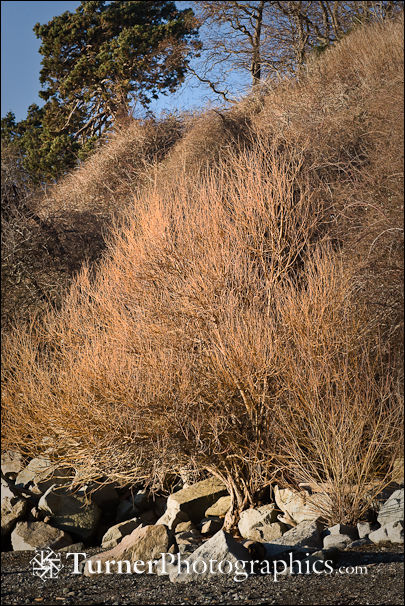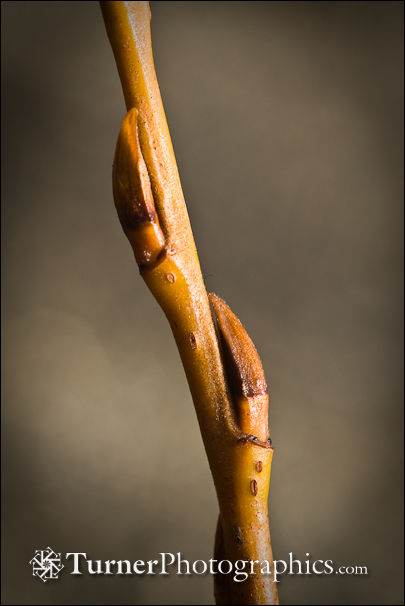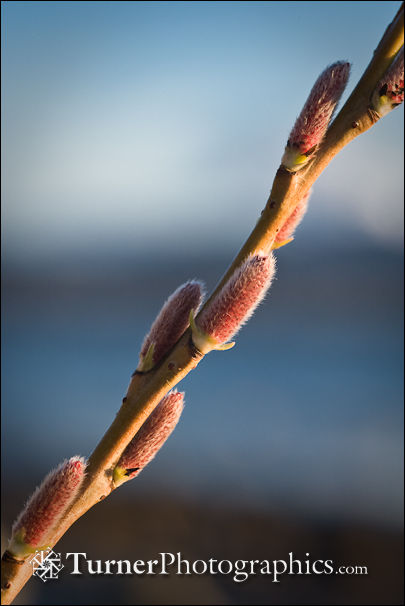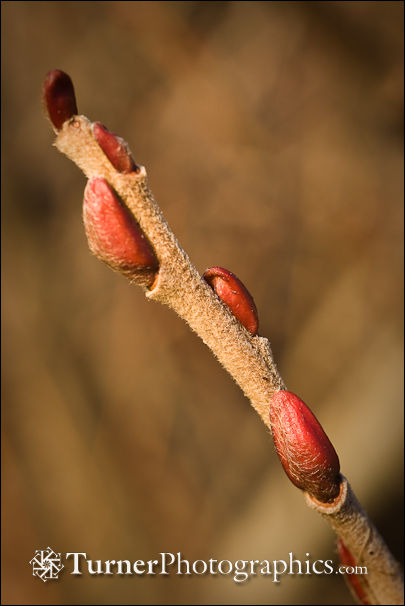No Wind in the Willows
 The Pacific Northwest is home to many species of willow. Some are shrubby, some grow to be fairly substantial trees, and some can be either a shrub or a tree depending on where they’re growing.
The Pacific Northwest is home to many species of willow. Some are shrubby, some grow to be fairly substantial trees, and some can be either a shrub or a tree depending on where they’re growing.
This afternoon I photographed the winter twigs on three species. At least I think I identified three separate species. The list is long, as given on the Washington Flora Checklist. I hope I’ll be able to find, identify, and photograph all of them this year.
My afternoon jaunt, with Natalie accompanying me, was to Bellingham’s Little Squalicum Beach. We hadn’t been down there for several years and this felt like a good time for a visit. The tide was going out, the light was golden in the late afternoon, and we had a little fun with a winter twigs key.
The first willow we encountered was Pacific Willow, growing here at the base of the bluff at the back of the beach. It’s pretty distinctive, with bright yellow twigs that glow in the sunlight.
 We used Al Hanners’ winter twigs key. Al is a long-time member of the Washington Native Plant Society and he put the key together between 1992 and 1996 when he was an active botanist in his 70s.
We used Al Hanners’ winter twigs key. Al is a long-time member of the Washington Native Plant Society and he put the key together between 1992 and 1996 when he was an active botanist in his 70s.
The old name for this species was Salix lasiandra but it’s now known as Salix lucida ssp. lasiandra as best I can determine. The USDA Plants database is one of the references I use routinely for current plant names, although it doesn’t always agree with other sources.
Pacific willow buds and twigs are glabrous (smooth); buds often “duckbilled.” Duckbilled means having a keel, like a boat, with a longitudinal depression on either side. It grows to become a tree up to 40 feet tall, branches ascending or spreading. The twigs are flexible, usually yellow or light greenish-yellow, and often with a narrow keel.
Note that the buds are appressed, or held flat against the twig. That’s another important characteristic when identifying willows at this stage of growth.
 Another of our common lowland willows is Scouler’s, Salix scouleriana. It is widespread across the Pacific Northwest and is one of the few willows that grow on dry woodland sites as well as in wet areas.
Another of our common lowland willows is Scouler’s, Salix scouleriana. It is widespread across the Pacific Northwest and is one of the few willows that grow on dry woodland sites as well as in wet areas.
Scouler’s Willow buds are usually ovoid, flattened against the twig, the tip pointed and usually appressed. Twigs and buds are usually hairy. This stem was slightly yellow, but not the strong golden color of the Pacific Willow. There’s always a lot of variability in plants, and they don’t read the keys. So a little interpretation is always required.
The buds pictured here have lost their bud scales and are beginning to expand. They’ll soon be flowers. Scouler’s is the first of our willows to bloom, which is another hint at identification at this time of year.
Lower down on this stem the buds were still sheathed and more clearly pressed to the twig. You can see the beginnings of this year’s leaves at the base of the flower buds if you look closely.
 The third willow Natalie and I encountered today was MacKenzie’s Willow, Salix prolixa. Our key took us to S. rigida, but that appears to no longer be an accepted name.
The third willow Natalie and I encountered today was MacKenzie’s Willow, Salix prolixa. Our key took us to S. rigida, but that appears to no longer be an accepted name.
Like the others, the buds are predominantly lance-shaped or “duckbilled.” But in this case the buds are twigs are densely covered with hairs, commonly forward-pointing or tangled. It’s clear even in the photo; the twig is very definitely covered with dense and tangled hairs.
The key continues: buds about 10mm long and 2.5mm wide, appressed, but often with an upturned tip. Stipule scars often prominent (but that wasn’t obvious to me). MacKenzie’s Willow is usually a shrub but can grow to become a small tree.
This species wasn’t nearly as showy as the Pacific Willow, and we didn’t find as many of them along the beach.
On the beach, which was mostly rocky, the transition from vegetation to shore is abrupt. The steep bank below the railroad was covered in shrubs and forbs, right down to the waterline at high tide. When wind-whipped waves lash the shore during a storm the trees and shrubs at the back of beach take a beating. It’s a tough environment but somehow some plants thrive here, tolerating the salt water, winter fresh water draining out of the cliff, and sun-baked summers.
I photographed today with my big Canon 1Ds Mk II, using a 100mm macro lens for the twig details and a 24-105mm zoom for the landscapes. I also shot a couple of landscapes near sunset with my 70-200mm lens. I noticed when processing all these in Lightroom tonight that I need to clean my sensor before I use the camera again. I had to do lots of dust spotting, particularly since I used a blue sky or soft focus background where the spots are most noticeable.


Delightful entry. Reminds me I need to get out and learn my willows, which I’ve tended to avoid over the years. Thanks. AR
Willows are definitely challenging. I’ve been avoiding learning them for years, too. But I’m starting work on a trees and shrubs book, which provides a lot of motivation to learn them.
Yes, wonderful willows. Your pictures focused on the buds while my collection started 10 to 15 years ago focused on the winter bark, sometimes the leaf, and like you, the emerging catkins.Marco Polo Stufano during his tenure at Wave Hill created beautiful scenes in the winter with willows.
The Frog says Yes, Wind does blow through those willows!